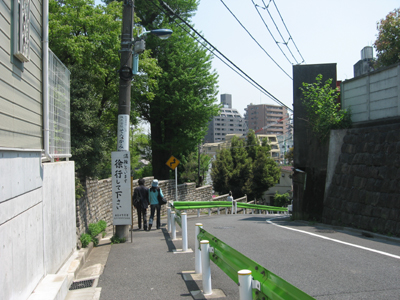
本郷弥生町からS坂、もしくは権現坂を下ると根津に到る。/ Gongen-zaka ( S-shaped ) Slope leads from Yayoi-cho, Hongo, to Nezu.
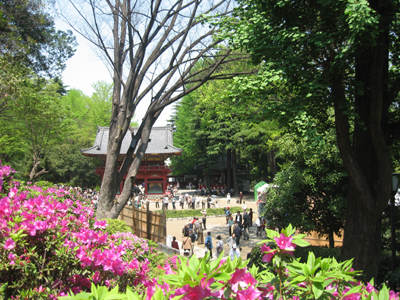
S坂途中の塀から根津神社を覗く。/ A view of Nezu Shrine from the middle of S-shaped Slope.
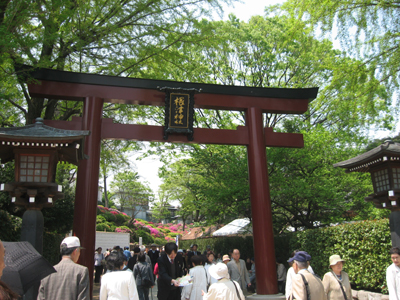
根津神社大鳥居。今年もツツジの季節が来た。/ The main gate to Nezu Shrine. The season of azalea has come!
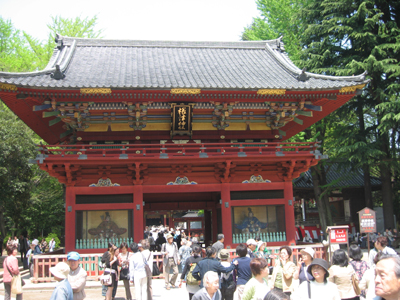
目にも鮮やかな朱塗りの「楼門」(重要文化財)。/ The bright colored entrance (a national important cultural property).
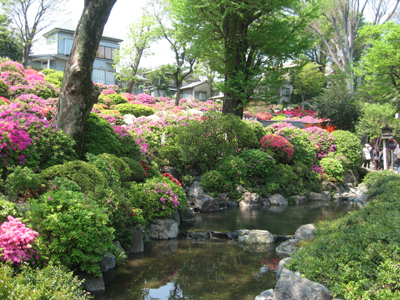
池の端から見上げる「ツツジ苑」。/ The azalea garden viewed from the pond.
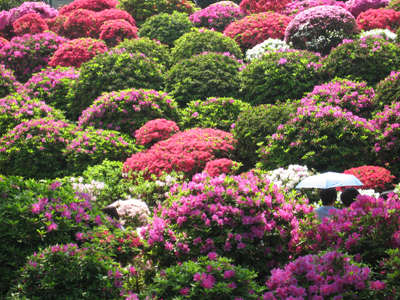
ツツジの陰を行く日傘。/Parasols are going through blooming azalea.
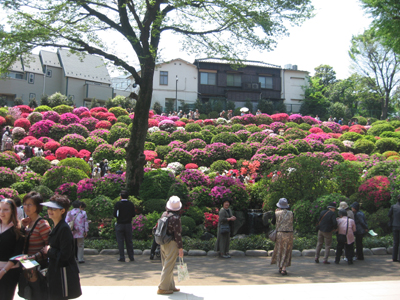
みんな記念写真を撮っている。/ Visitors like to take photos.
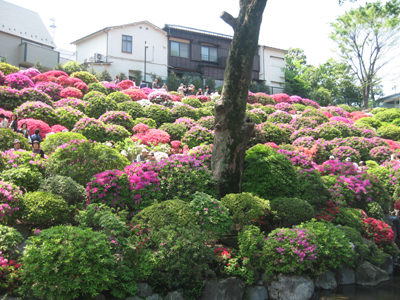
どっしりした住宅に取り囲まれた「ツツジ苑」。/ The azalea garden is surrounded by decent houses.
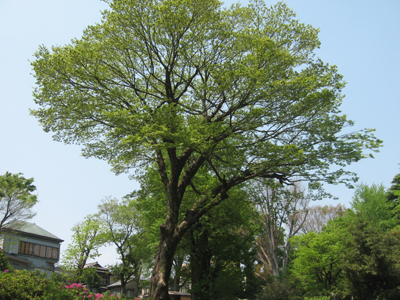
ツツジの季節には新緑が眩しい。/ The season of azalea is also the season of fresh green leaves.
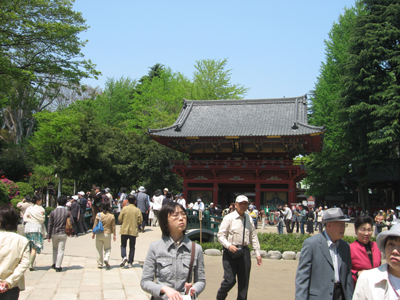
今年も大勢の人が訪れている。後ろは「楼門」。/ Numerous visitors are comingto the shrine this year.
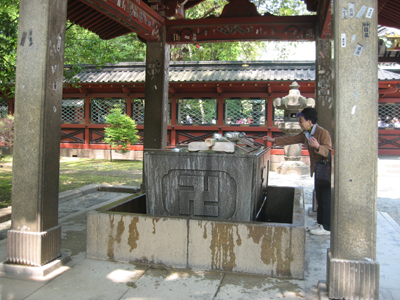
手水舎。うしろに透塀(重要文化財)が見えている。/ People wash hands here to purify themselves before going to the main hall for worship.
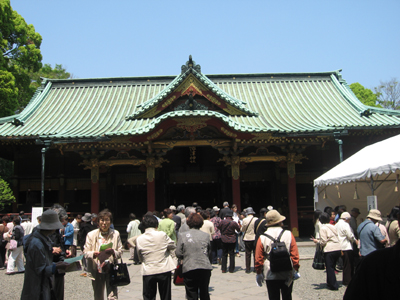
「楼門」をくぐると、権現造りの「拝殿」「本殿」。/ Going under the gate, visitors come to the front of the main hall for worship.
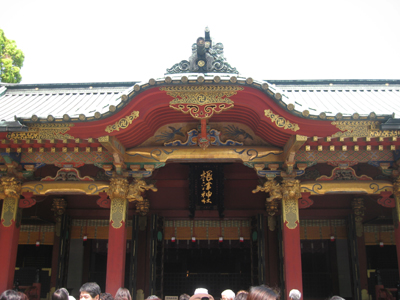
社殿(重要文化財)は五代将軍徳川吉綱が宝永三年(1706)に奉納した。/ The main building of the shrine was dedicated by the fifth Shogun, Tokugawa Yoshitsuna, in 1706. (A national important cultural property)
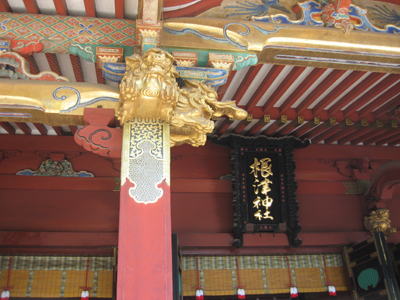
金の龍が柱を守る。/ Golden dragons are guarding the columns of the shrine.
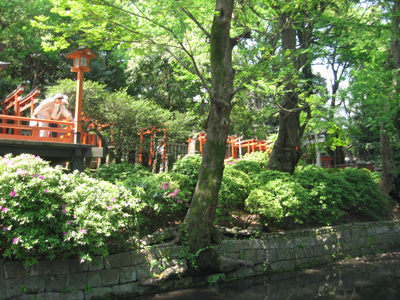
乙女稲荷の左右には「千本鳥居」の参道が続く。/ At both sides of Otome-Inari are lanes covered with hundreds of red "torii" (wooden gates to the shrine).
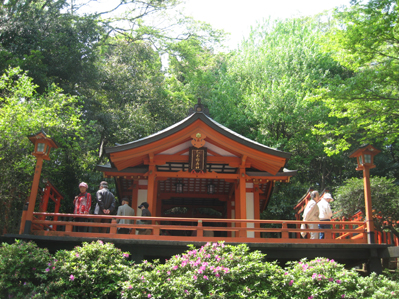
池を見下ろす「舞台造り」の乙女稲荷。/ Otome (maiden) Shrine is built in the stage style, looking down at the pond underneath.
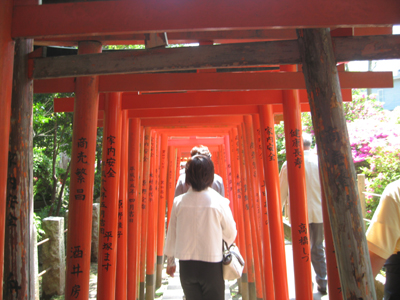
明るい「千本鳥居」をくぐる。/ Visitors are going under Senbon-Torii.
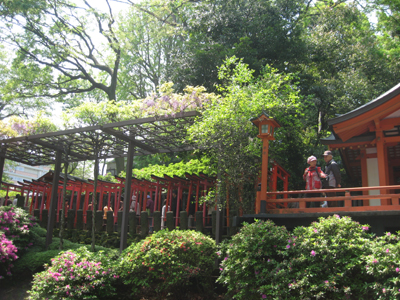
乙女稲荷脇の藤棚もそろそろ満開が近い。/ The wisteria terrace is almost in full bloom.
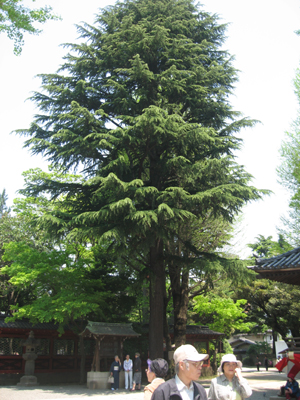
境内のヒマラヤ杉。/ A tall cedar tree in the shrine yard.
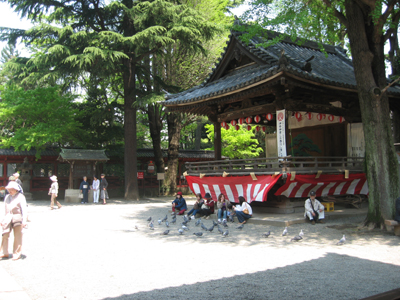
舞殿。腰を下ろしてくつろぐ人の周りに、ハトが集まっていた。/ A dance stage of the shrine. Doves were gathering around people sitting under the stage.
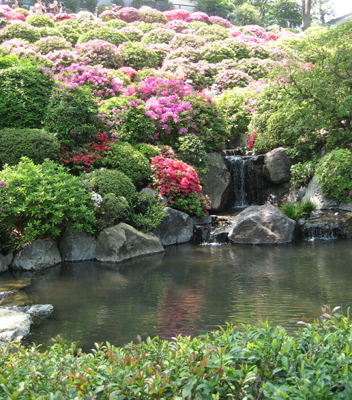
つつじ苑の下は山水を模した池に滝の水が落ちる。/Under the azalea garden is the pond built to imitate a stream in mountains.
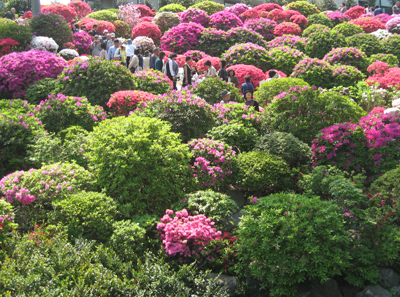
ツツジの間を行く人たち。/ Visitors are wandering slowly in azalea.
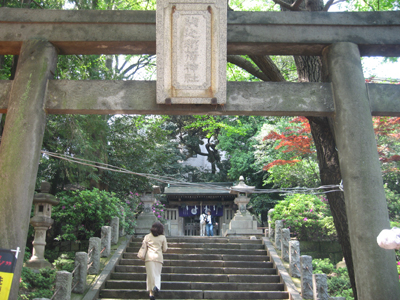
江戸時代の石の鳥居から「駒込稲荷」を見上げる。/ Komagome Shrine, older than Nezu Shrine, viewed from the stone gate made in Edo Era,
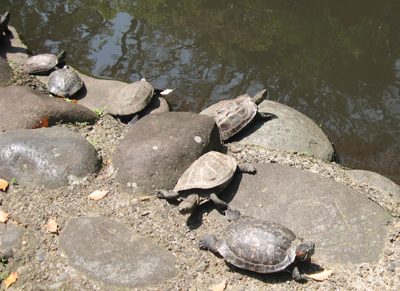
池の畔で甲羅干しする亀たち。/Turtles are sunbathing by the pond.
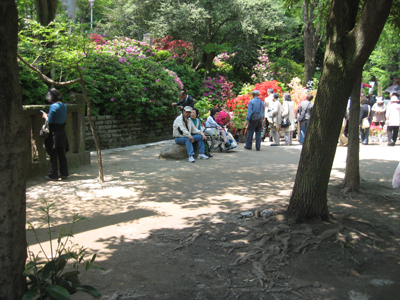
境内の「文豪の石」は漱石、鴎外も散歩の折りに腰を下ろした場所とか。/ People are sitting on the stone named "Authors' Seat,"where Natsume Souseki, Mori Ougai and other great writers in Meiji Era are said to have sit there while they were taking a walk in this area.
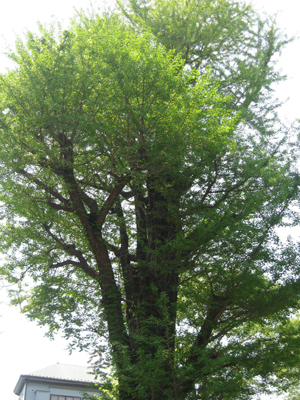
銀杏の新芽が初々しい。/ Fresh green leaves of a huge gingko tree.
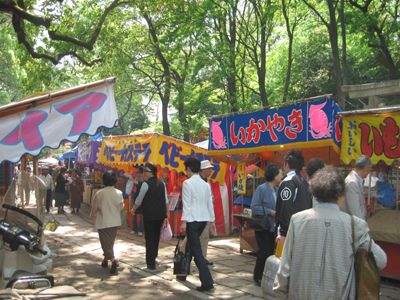
つつじ祭りともなれば、露店が軒を並べる。/ Stalls of vendors are waiting for visitors.
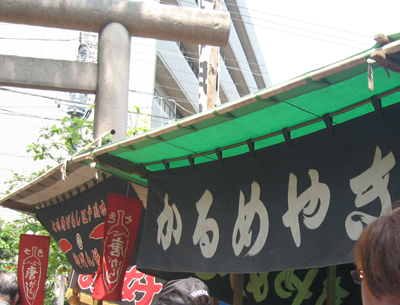
「かるめ焼き」の店から香ばしい匂いが。/ A sugar cake vendor.
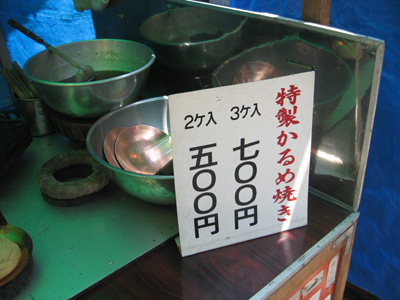
安くはないが、大きくていかにも美味しそう。/ Not very cheap, but looks delicious.
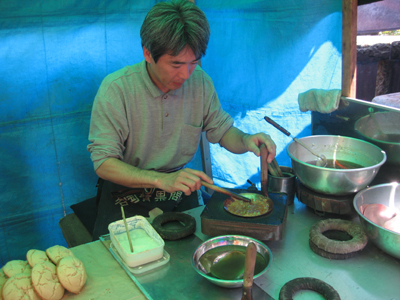
かるめ焼きを作るところを拝見。/ The shop owner let me look at his work and take photos.
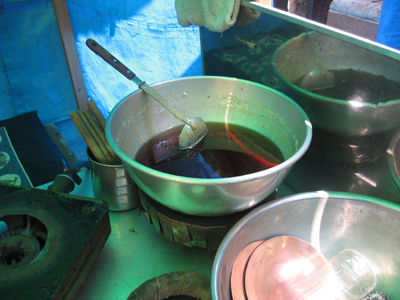
ボールに入っているのは砂糖を溶かしたもの。/ Liquid sugar is in a large bowl.
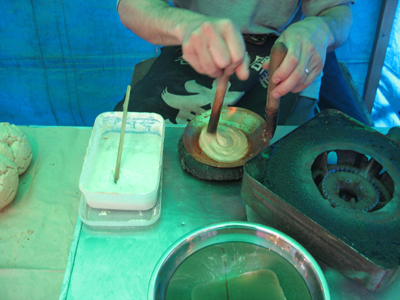
溶き砂糖を小鍋で煮詰める。/ He boils the liquid sugar in a small pan.
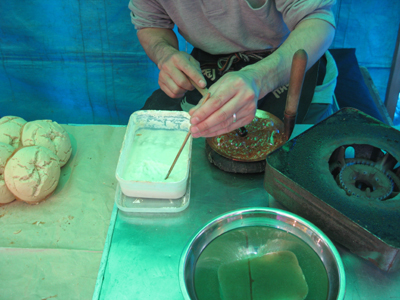
ぐつぐつ煮えている砂糖に「重曹」を箸の先で加える。/ He adds a little bit of baking soda with the tip of the chop stick to the boiling liquid sugar.
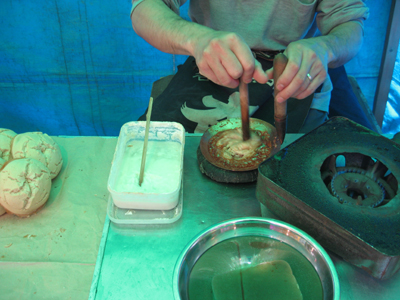
重曹を混ぜると透明だった砂糖溶液は白濁してどろりとする。/ With the soda, transparent liquid sugar becomes whitish gel
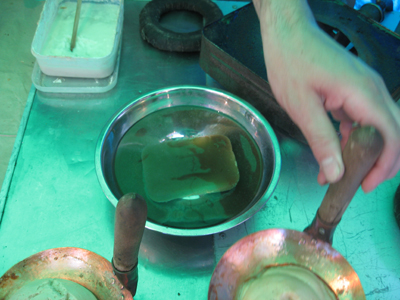
白く固まりかけた熱い鍋底を、ボールの水にじゅっと付ける。/ He put the botoom of the hot pan with the whitish gel in the water for a second.
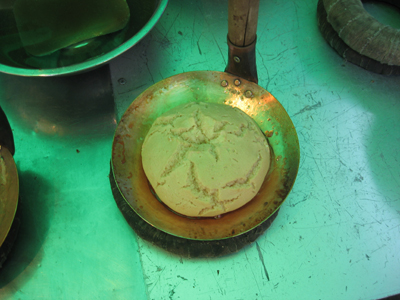
一瞬のうちに溶液は固まってふわっと大きくなる。/ Immediately, the gel becomes a crisp solid and blows up softly.
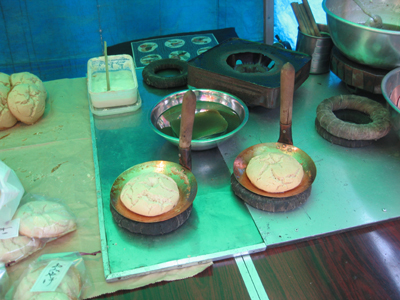
できたてのかるめ焼きをさましているところ。/ Cooling the freshly made karume yaki.
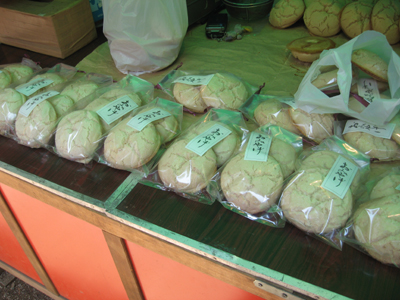
かりっと冷めたらビニール袋に入れて、「おみやげ」のできあがり。/ When it's cool enough, the sugar cakes are put in plastic bags with a slip of paper printed as "souvnir."
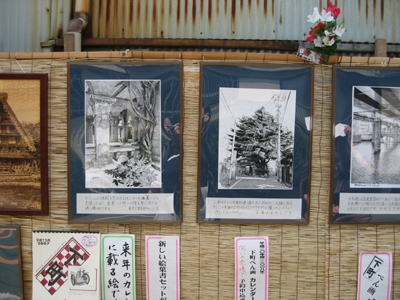
根津神社の門前で、杉山八郎画伯のペン画展示と絵はがきや画集の即売会をしていた。東京の下町の情景を丹念に描く杉山画伯の絵は私も大好きだ。/ In front of Nezu Shrine there was a simple exhibition of Sugiyam Hachiro, an artist drawing in ink scnes of downtown Tokyo. I love his works.
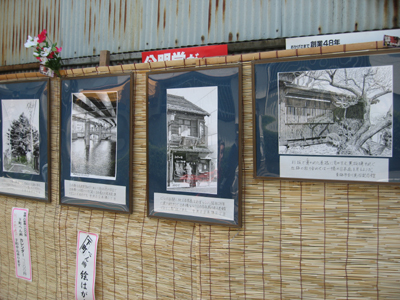
よしずにさりげなく掛けられた作品が、行き交う人の目を引く。/ People were watching the drawings with interest.
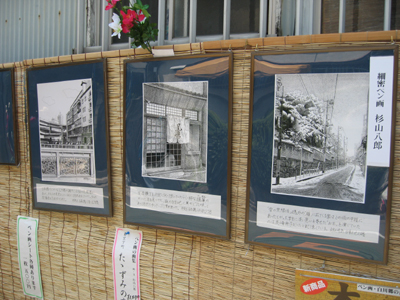
根津にアート・ルームを構える杉山画伯。/ The artist Sugiyama lives in Nezu.
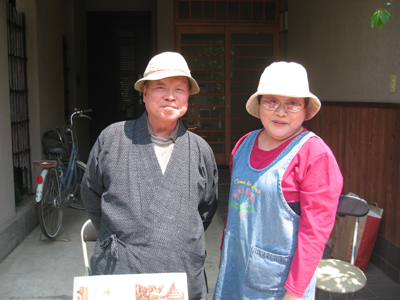
杉山氏自身が絵はがきを売り、サインをしてくれた。お手伝いの女性と一緒に。/ Mr Sugiyama himself was selling his postcards with a helping woman. He signed on the cover of postcards.
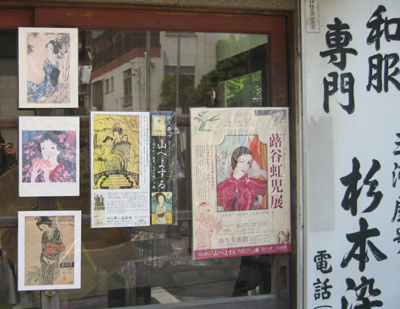
隣の染物屋のガラス戸には、弥生美術館の展覧会のポスターが貼ってある。/ On the window of a dyer's shop are posters of Yayoi Art Museum.
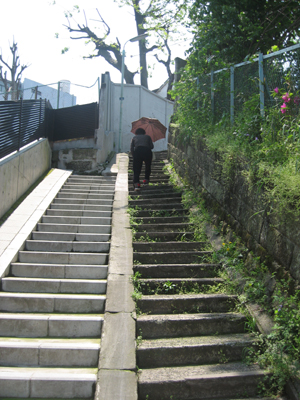
権現坂下から南に歩くと、「おばけ階段」がある。昼日中ならどうということもないが、暗くなってからだと確かに気味が悪いかも知れない。/ From Gongen Zaka, you can walk southward to "Ghost's Stairs." At noon, the steps are not scary at all, but after dark I guess it is a lonely place.
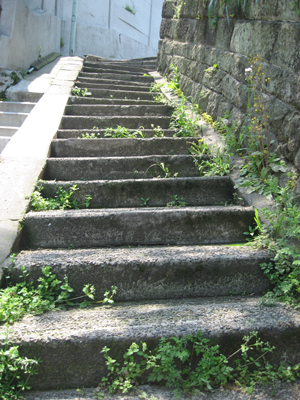
「おばけ階段」の細い石段は草むして、右と左がある。/ "Ghost's Stairs" made of stone is covered with grasses.
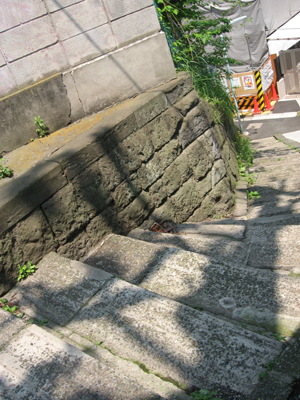
階段の下ではしきりに工事をしていたが、段々を上がっていくと喧噪が遠ざかる。/ Under the stairs there was a big noise of construction trucks, but as I climbed up it went far away.
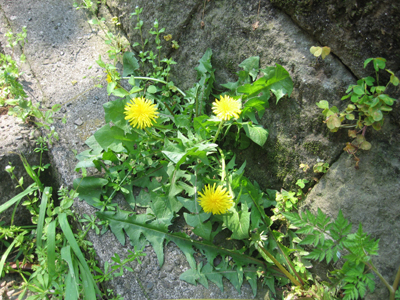
変哲もないタンポポだが、勢いが良い。/ Dandelions looked very lively.
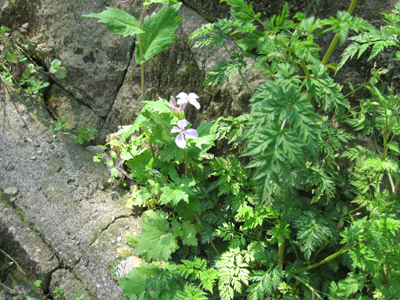
花ダイコンも咲いていた。/ Dame's vilolet was in bloom.
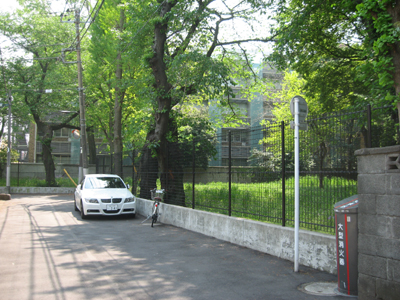
「おばけ階段」の上は東大の裏手に当たる、静かな住宅地。/ Upon "Ghost's Stairs" is the back side of the University of Tokyo. A quiet residential area.
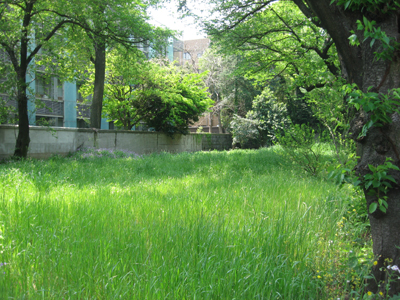
野原があちこちにあって、緑の草が萌え出る。/ Grass fileds are here and there.
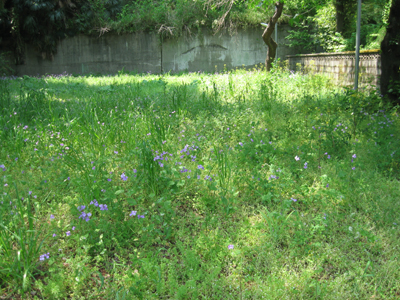
こんな空き地、元は誰かの屋敷だったのだろうか。/ Was this open space once an estate of somebody?
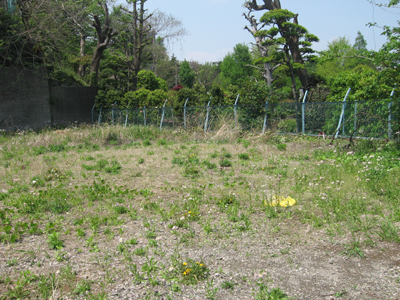
都会の真空地帯が茫々と拡がる。/ A vacume pocket in an urban area.
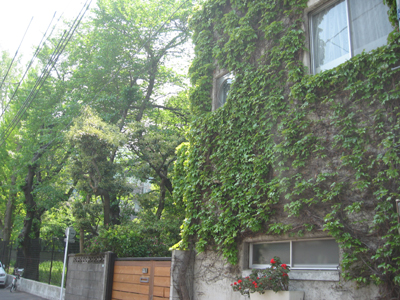
蔦の絡まる住宅が辺りの緑にとけ込んで。/ A house covered with ivy.
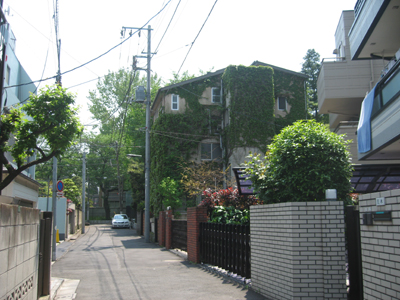
都心でも、誰にも出会わない静かな通り。/ I met nobody in this lane, in the middle of Tokyo.

花の終わった桜の木に、サクランボがなっていた。/ Cherries were plump after flowers were gone.
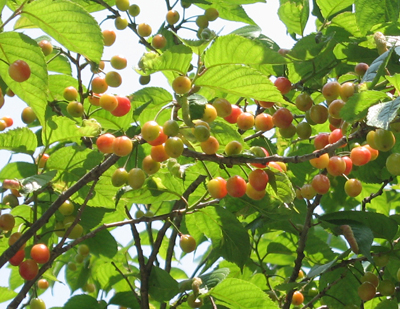
本郷弥生町からから根津へ、そしてまた根津から弥生坂へと上った。今年もサクランボの実る頃に。/ From Yayoi-cho of Hongo to Nezu, and back from Nezu to Yayoi Zaka, I took a walk again in the season of cherries.